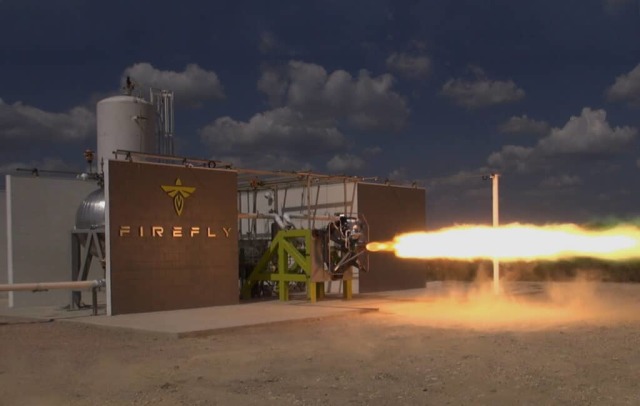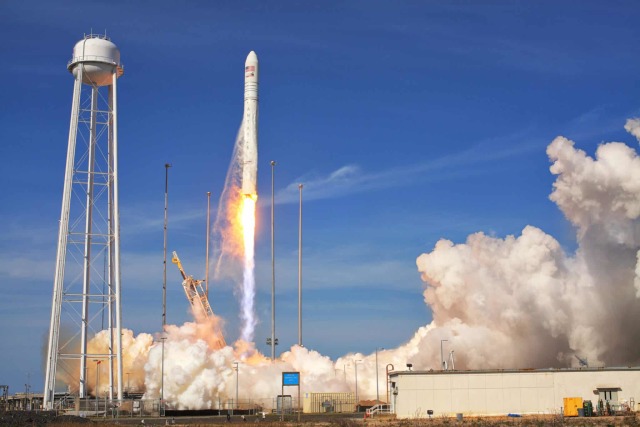Initially looking promising, the Antares launch vehicle has become quite problematic in recent years. Its creation required the cooperation of the United States, Ukraine and Russia, which is practically impossible in the light of the current geopolitical situation. The solution to the problem will be the transition from Russian engines to those created in America. And the key role in it will be played partly by the Ukrainian company Firefly Aerospace.
According [...] to the SpaceNews portal, the corresponding agreement was signed betweenFirefly and the leading developer of the Antares rocket is Orbital Sciences Corporation (OSC, a division of Northrop Grumman since 2018). The Ukrainian-American partner will be responsible for the design and production of the first stage with seven Miranda engines. Their total productivity will exceed that of the previously used pair of Russian-made RD-181. As an additional advantage, the increased payload capacity of the entire carrier is stated: from 8,100 kilograms in the current configuration to 10,500 kilograms (values for missions to the International Space Station are indicated).
Details of the upcoming cooperation are not yet disclosed in detail. It is reported that the new first stage (with an index of 300) will receive not only development enginesFirefly. It will also be produced using the technologies of this private company — mainly from composite materials. It is noted that it will not be necessary to redo the launch pad for the 300-series stage, the former site of the Mid-Atlantic Regional Spaceport (MARS) in Virginia (near the Wallops cosmodrome) will do. Most importantly, now all the rocket components will be manufactured in the USA, and logistics problems should become much less.
As the second stage, OSC plans to continue using solid-fuel accelerators of the Castor 30 family, in this case, the most powerful XL. The updated Antares (index 330), like previous versions, will have to be used to launch Cygnus unmanned spacecraft. Their task is to supply the ISS with cargo on a commercial basis by order of the US National Aeronautics and Space Administration (NASA).
This has not been directly discussed yet, but, apparently, Cygnus it will also receive a radical update. The fact is that Antares does not take other payloads into space (although theoretically it can), so the rocket does not need to increase its payload capacity. Nevertheless, among other things, the growth of the thrown mass of the OSC andFirefly promises to convert into an additional 1,250 kilograms of good that the ISS crews will be able to receive. Now Cygnus is able to deliver up to 3,700 kilograms (for comparison, Progress MS delivers 2.5 tons), which has already become an improved indicator compared to the original version of the ship.
Both companies confirmed to journalists that the modernization of Antares is not the only goal of cooperation. In the future, OSC together withFirefly plans to develop a completely new medium-class carrier. Its name and at least approximate characteristics are not disclosed. At Northrop Grumman, the Antares 330 readiness dates are referred to as "already 2024". However, in the aerospace industry, the stated schedules are rarely followed — safety is more important.

Tests of the prototype of the FRE-R1 rocket engine, on the basis of which the Reaver 1 engine was later created. It, in turn, is used on the Firefly Alpha rocket, the first launch of which in September 2021 was unsuccessful. The next one is scheduled for September 2022
Image Source: Firefly Aerospace
The history of Antares (in the early stages of development — Taurus II) perfectly illustrates how promising scientific and technical cooperation for the sake of progress can go to waste. Orbital conceived the rocket as a cheap and simple carrier to fulfill NASA contracts for cargo delivery to the ISS. The Cygnus spacecraft was developed for the same purposes, so that the parameters of the target payload were clear. The engines chosen were purchased by the companyAerojet in Russia NK-33, stored since its production in the 1970s without a case. They were equipped with modern electronics, checked and, calling AJ26, installed on the first stage (series 100). By the way, it was ordered from a well—known organization with Soviet rocket engines - the Ukrainian Yuzhmash. The second stage (Castor 30) was made from the Castor 120 solid-fuel accelerator for Minotaur-C (aka Taurus) by reducing and slightly upgrading.
The result is Antares 110 and 120, the second digit means the Castor 30 version — A or B, they differ in thrust and efficiency. They successfully launched four times, until time took its toll and the homologated NK-33 began to collapse right in flight or on the test stand. The fifth Antares mission ended catastrophically a few seconds after launch. Unfortunately, this ended the rather interesting history of the Soviet engines, which were intended for the lunar program, but for the first time were able to fly only in the XXI century and on a rocket of another country.
The replacement of the AJ26 was not sought for long: the NK-33 reserve at one time led to the creation of the RD-170, from which the RD-180/181 then originated. The processing of the first stage was also fast, and the 200 series appeared (while Antares could not be used, Cygnus flew on Atlas V). But it was already 2016, and relations between both the United States and Ukraine with Russia became tense. For some reason Orbital they did not actively look for alternatives, which is why by February 2022 the company had only two engines left for two launches. And the functioning of Yuzhmash turned out to be hampered by the proximity of hostilities.
Cooperation withFirefly in the light of the current situation looks very logical. The key investor of this company in 2017 was Ukrainian entrepreneur Maxim Polyakov, who not only breathed new life into it, but also opened an engineering division in his homeland.
In four yearsFirefly attracted several hundred young specialists and employees of the rocket and space industry of Ukraine. A considerable part of them have migrated to the United States in recent months. In addition, a huge scientific and technical potential has "moved" to America. Although Polyakov had to sell his share in the company due to bureaucratic subtleties,Firefly continues to evolve on the created groundwork.

